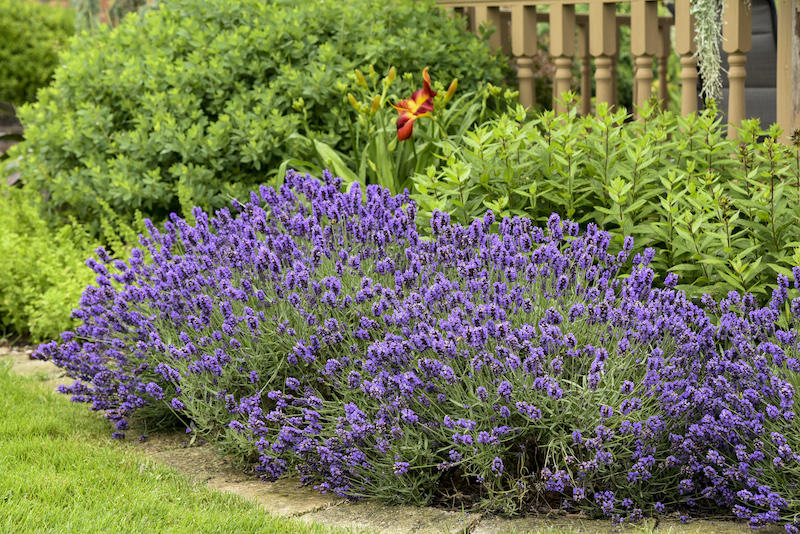Lavender provides lovely color and soothing fragrance in the landscape, attracting pollinators to their nectar-rich flowers. This perennial herb has many practical uses in cooking and aromatherapy. Dried lavender flowers and foliage hold their fragrance when used in flower arrangements, beauty products, and crafts.

There are three main types of lavender: Spanish, French hybrids, and English. English is the most cold hardy and blooms in the early part of the summer but can have a second flush later in the season. Spanish varieties are best grown in arid locations; they bloom earlier in the season and are hardy in zone 8 and warmer. French hybrid lavenders bloom in summer and are cold hardy down to Zone 6; these may require extra frost protection at the lower end of their growing range. All lavender plants should be planted in full sun with well-draining soil. Staggering the varieties will give a long stretch of fragrance and blooms throughout the growing season.
What You Need To Plant Lavender
- Shovel or garden spade
- Well-draining soil
- Full-sun location
- Water source
- Small rocks as mulch
Where to Plant Lavender
This herbal shrub is excellent for hot, dry, water-wise landscapes. Lavender loves it warm and dry; avoid planting in any location where the soil remains soggy. If your soil is clay, amend it with sand, chunky organic compost, or small gravel. Select a location that receives full sun, and at least 8 hours of direct sunlight daily. The sunnier the location, the better the form and bloom production. Always plant lavender a few feet from other plants or structures to provide good air circulation. Lavender should be planted at a depth where the crown of the plant sits at soil level.

Lavender Spacing
There are many varieties of English, French, and Spanish Lavender, many reaching varying heights. Most spread to 24 inches but some grow as a small shrub reaching widths of 40 inches or more. When planting lavender, consider the mature width of your variety and space accordingly. Be sure to position all lavender varieties in full sun, in a spot where taller shrubs, trees, and structures will not cast shade or impede air circulation. Lavender is lovely when planted en masse as a border for walkways and paths.

Steps To Plant Lavender
Select a full-sun location that receives at least 8 hours of direct sun daily. The area should have very well-draining soil. If it doesn’t, amend the soil with sand, chunky compost, or small gravel. If the soil is clay and holds onto water, Lavender is susceptible to root rot and will not survive.
Dig a hole, and chop up the surrounding soil so it becomes loose. The hole should be the same depth as the container it came in, and twice as wide. Gently remove the lavender from the container, then loosen the roots with your fingers. Lavender is known to become root bound so this step is important to help the roots spread out. Place the plant in the hole at a depth where the plant's crown sits at the soil level. Backfill with the surrounding soil, gently push on the soil to remove any air pockets, and water around the root zone well.
Step 1 - Select a sunny location with well-draining soil
Step 2 - Dig a hole, amend the soil if necessary
Step 3 - Loosen the plant's roots with your fingers to encourage the roots to spread
Step 4 - Place the lavender plant in the hole, with the crown at soil level
Step 5 - Gently backfill the hole, tamping down the soil to remove any air pockets
Step 6 - Water around the root zone well, particularly in the first growing season
When to Plant Lavender
In cooler climates, plant lavender in the spring. If you are in a warmer growing zone, lavender can be planted in spring or fall.
Transplanting Lavender
Lavender does not divide well because it is a semi-woody perennial with a single stem; attempting to divide it may result in the plant failing. Lavender occasionally will develop multiple stems if the stems of the plant get layered into the soil and form roots. The easiest way to propagate lavender is to take cuttings from an existing plant. If you transplant the entire plant to a new location, it is best to do that in spring.
 |
Author Chris Link - Published 01-20-2023 |
